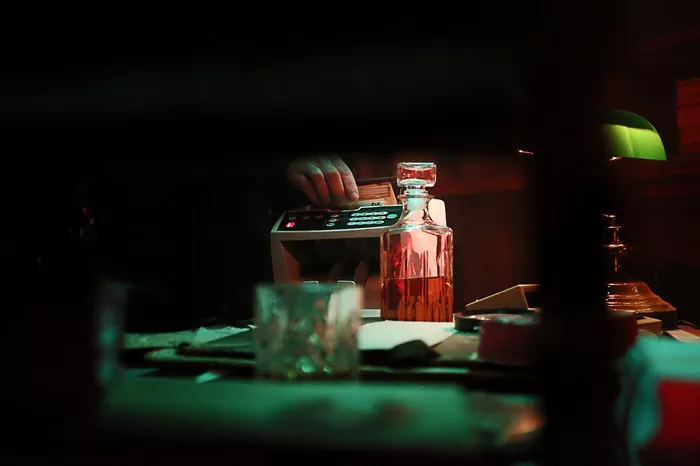In the realm of spirits, few beverages come with as much allure and mystique as absinthe. The rituals and paraphernalia associated with absinthe consumption have captivated enthusiasts for generations. Central to the absinthe experience is the absinthe fountain, a striking and functional piece of art that adds a touch of elegance to the ritual. In this article, we explore the world of the absinthe fountain, shedding light on its history, design, and the unique role it plays in the enjoyment of this iconic spirit.
A Glimpse into History: The Birth of Absinthe and Its Rituals
Absinthe, a highly alcoholic anise-flavored spirit, has a storied history that dates back to the late 18th century. It gained immense popularity in the 19th century, particularly in France, where it became the drink of choice for artists, writers, and bohemians. The absinthe ritual, with its elaborate accessories like spoons, sugar cubes, and the absinthe fountain, became a hallmark of the absinthe-drinking experience.
The Role of the Absinthe Fountain: An Elegant Dispenser
At the heart of the absinthe ritual stands the absinthe fountain, a captivating and functional piece of equipment. Here’s a closer look at its features and significance:
Design: Absinthe fountains typically feature an ornate and decorative design, often crafted from materials like glass, metal, or porcelain. The aesthetic appeal of the fountain adds to the overall experience.
Water Dispensing: The primary function of the absinthe fountain is to dispense ice-cold water. It usually has multiple spigots or faucets that allow for controlled dripping of water into glasses of absinthe.
Dilution Control: The slow and steady drip of water from the fountain onto a sugar cube placed atop an absinthe spoon, which holds the sugar cube over the glass of absinthe, allows drinkers to control the dilution of their drink.
The Ritual: How to Use an Absinthe Fountain
Using an absinthe fountain is a captivating and ritualistic experience:
Preparation: Place a glass of absinthe in the absinthe glass holder under the fountain’s spigot. Position an absinthe spoon with a sugar cube atop the glass.
Icy Elegance: Fill the fountain’s reservoir with ice water. Turn on the spigots to allow the water to flow slowly and steadily onto the sugar cube.
Dissolution: As the water drips onto the sugar cube, it slowly dissolves and mingles with the absinthe, creating the louche—a mesmerizing transformation of the spirit’s color and flavor.
Enjoyment: Once the desired dilution is achieved, stir the mixture gently and savor the nuanced flavors and aromas of the absinthe.
The Cultural Significance: Absinthe and Artistry
The absinthe fountain, along with the entire absinthe ritual, holds cultural significance. It was a common sight in the cafes and studios of artists and writers during the Belle Époque in France. Absinthe’s creative associations with figures like Vincent van Gogh, Henri de Toulouse-Lautrec, and Oscar Wilde have contributed to its enduring allure.
Modern Revival: Rediscovering the Absinthe Fountain
While the popularity of absinthe waned in the early 20th century due to prohibition in various countries, it has experienced a resurgence in recent years. The absinthe fountain, once a relic of the past, has made a comeback, becoming an essential accessory for contemporary absinthe enthusiasts who appreciate the elegance and authenticity it brings to the experience.
In conclusion, the absinthe fountain stands as a testament to the rich history and artistry associated with absinthe. It adds a touch of elegance to the ritual, allowing drinkers to savor the spirit while participating in a tradition that has captivated generations of enthusiasts and artists.
FAQs about absinthe fountains :
What is the history behind the use of absinthe fountains in absinthe consumption?
Answer: Absinthe fountains have a rich history dating back to the 19th century, when they became an integral part of the absinthe-drinking ritual. They were popularized in France during the Belle Époque.
Why are absinthe fountains considered an essential accessory for absinthe enthusiasts?
Answer: Absinthe fountains serve a functional purpose by allowing drinkers to control the dilution of their absinthe, but they also add an element of elegance and authenticity to the ritual, enhancing the overall experience.
How do absinthe fountains work, and what is their role in the louche effect?
Answer: Absinthe fountains dispense ice-cold water in a slow and controlled manner onto a sugar cube placed atop an absinthe spoon, which holds the sugar cube over the glass of absinthe. The slow dilution process creates the louche effect, which is a mesmerizing transformation of the absinthe’s color and flavor.
Are there specific guidelines or etiquette for using an absinthe fountain in the traditional absinthe-drinking ritual?
Answer: Yes, there are traditional steps to follow when using an absinthe fountain, including the placement of the glass, sugar cube, and spoon. The slow drip of water should be adjusted to achieve the desired dilution.
What materials are absinthe fountains typically made from, and do they come in various designs?
Answer: Absinthe fountains are often made from materials like glass, metal, or porcelain, and they are known for their ornate and decorative designs. They can vary in aesthetics, from classic to contemporary.
Is the use of absinthe fountains limited to traditional absinthe rituals, or can they be used for other purposes?
Answer: While absinthe fountains are primarily associated with traditional absinthe rituals, some enthusiasts use them for other beverages or as decorative pieces.
Has the popularity of absinthe fountains experienced a resurgence in recent years, and why?
Answer: Yes, there has been a resurgence in the popularity of absinthe fountains as absinthe culture has experienced a revival. This resurgence is driven by a growing appreciation for the history and artistry of absinthe.


